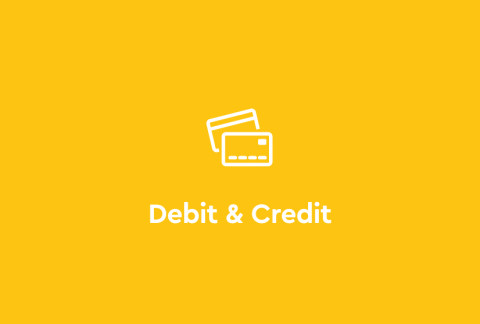An Investing Checklist for Beginners

So you’ve decided you’re ready to start investing. Great! Now what? As a newbie to the world of investing, it’s completely natural to have a lot of questions. Here’s a guide to help you start off on the right foot.
Note: For questions about how much you should personally invest or what assets are best for you, it’s best to consult a financial advisor.
Step 1. Learn the basics of investing
Like anything in life, you have to walk before you run. When it comes to investing in the stock market, this means learning the basics of how the stock market works and understanding how to invest. Consider starting with key terminology. For example: A security is a financial asset that has value and can be bought, sold, or traded. A stock is one example of a security that represents ownership in a public company.
You can find plenty of free resources online, including Money 101, a free financial literacy program from Step, and glossaries of common terms. But don’t stop at definitions! Once you familiarize yourself with the terminology, move on to investing concepts like diversification, risk tolerance, and asset allocation. You don’t have to be an expert before you start buying and selling, but it’s important to establish a strong foundation.
Step 2. Consider your financial goals
Next, create a list of your financial goals. Are you saving for a car? Do you want to go to college? Do you dream of owning a home one day? Then, think about whether these are short-, medium-, or long-term goals. Knowing what you want to achieve and when will help you determine the right investment strategy.
According to the Financial Industry Regulatory Authority (FINRA), short-term goals – those achievable in less than three years – may be best suited for lower-risk approaches like money market accounts (source). You don’t want to be in a situation where you can’t put a deposit down on a car because your money is tied up in an investment!
On the other hand, if your goals are long-term, you may consider investments that have higher risks but higher potential rewards, like stocks. This is because your money has more time to recover from potential losses and take advantage of compound growth over time.
Step 3. Build a budget
You don’t need a lot of money to invest, but it’s important to have some savings set aside before you start. The exact amount you need depends on whether you’re financially independent, how much you make, and how much you spend monthly.
One common method to budgeting is the 50/30/20 rule. You use 50 percent of your earnings on your needs, 30 percent on wants, and 20 percent on savings. Your savings is a place to set aside money for emergency or unexpected expenses, to pay down debt, and dream big – setting a few savings goals.
Another approach to budgeting is using envelopes or virtual envelopes to allocate specific amounts to specific expenses. For example, let's say you want to start building an investment portfolio a little at a time. With the Step app, you can create an investing goal and automatically add spare change from everyday purchases to it. Before you know it, you’ll have a few dollars that you can use to invest in your future – it only takes $1 to buy fractional shares with Step!
Step 4. Determine your risk tolerance
When it comes to investing, there are no guarantees. You are taking a risk for the chance to make more money than what you started with. But not all investments have the same amount of risk, and not all people have the same comfort levels.
Understanding your risk tolerance is an important first step in figuring out which stocks, ETFs, bonds, or funds are right for you. To do this, ask yourself questions like these:
Are you saving for something 10 years from now or 10 months from now? Oftentimes, the longer your timeline is, the more aggressive you can be. But just because you can, doesn’t mean you have to!
Would you rather have $100 in cash right now or a 50% chance of winning $1,000? If you prefer the guarantee, this could mean you have a lower risk tolerance. If you prefer to take the chance to win more, it could mean you have a higher risk tolerance.
If you opened your account and saw a decline in your portfolio’s value, would you sell some of your assets right away or ride it out? Your ability to take on risk is partially a function of your investment timeframe, often called staying power.
There is no right answer when it comes to figuring out your risk tolerance and it can change over time. There are plenty of investment options out there, it’s just about figuring out what’s right for you.
Step 5. Research, research, research
The best investors are usually the ones who do the most research.
If you’re going to invest in individual stocks, get to know the companies first. It’s wise to look into how a business makes money, whether it’s been growing, and historical stock performance. If you’re investing with Step, you can use your app to research stats like a stock’s 52 week high and low, P/E ratio, dividend yield, and more.
If you’re more inclined to invest in an ETF, consider factors like the underlying index (S&P 500 vs Dow Jones), its asset class (stocks vs bonds), trading volume, and expense ratio – or fees associated with owning the fund. The lower, the better when it comes to expense ratios. Otherwise, you might end up spending whatever you make on fees.
Remember, diversification is key when it comes to investing. It’s best to avoid putting all your eggs in one basket – you just never know what could happen!
Step 6. Keep track of your portfolio performance
Once you make your first purchase and become the proud owner of a stock or a basket of securities, it’s time to monitor your investments!
As long as you invest for the long-term, you don’t need to check your portfolio everyday (or even every month). In fact, research shows us that looking every day can actually make you more likely to make impulsive decisions (source).
However, when you’re just getting started, it can be helpful to regularly follow your investments and track the ebbs and flows of the market. Learning what’s working – and what’s not – can help you make better investing decisions over time.
The takeaway
Investing can be intimidating, which is why you need to simply put one foot in front of the other until you gain some confidence. It can take time to get into a good groove with investing, which is why the sooner you can start, the better.
The information presented herein is for educational purposes only and does not constitute investment advice or an offer to buy or sell any security, investment or other product. See our additional stock and crypto risk disclosures.







